Blog
Facts About Children’s Feet
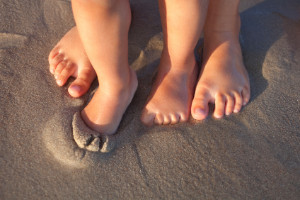
There are basic facts involving children’s feet that are interesting to know. The bones in children’s feet do not fully develop until the age of 13, and it is helpful to provide them with shoes that have the necessary support as they grow. This is crucial in maintaining good foot health. Many parents realize they are buying shoes at an accelerated rate during the first few years after birth. Research has shown the feet grow the fastest in the first three years. Flexible and comfortable shoes are ideal to purchase, and this can help the child to get accustomed to their growing feet. The feet house one-quarter of the bones that are in the body, and the majority of babies are born with flat feet. The arch generally develops during the teenage years, and having an abnormal foot structure may cause flat feet to lead into adulthood. If you would like more information about children’s foot health, it is suggested that you speak with a podiatrist who can provide you with the knowledge you are seeking.
The health of a child’s feet is vital to their overall well-being. If you have any questions regarding foot health, contact one of our podiatrists of James Kutchback, DPM, CWS-P. Our doctors can provide the care you need to keep you pain-free and on your feet.
Tips for Keeping Children's Feet Healthy
- Make sure their shoes fit properly
- Look for any signs of in-toeing or out-toeing
- Check to see if they have Clubfoot (condition that affects your child’s foot and ankle, twisting the heel and toes inward) which is one of the most common nonmajor birth defects.
- Lightly cover your baby’s feet (Tight covers may keep your baby from moving their feet freely, and could prevent normal development)
- Allow your toddler to go shoeless (Shoes can be restricting for a young child’s foot)
- Cut toenails straight across to avoid ingrown toenails
- Keep your child’s foot clean and dry
- Cover cuts and scrapes. Wash any scratches with soap and water and cover them with a bandage until they’ve healed.
If you have any questions, please feel free to contact our offices located in The Woodlands and Woodville, TX . We offer the newest diagnostic and treatment technologies for all your foot care needs.
Healing From a Broken Toe

It typically takes about six weeks to heal from a broken toe, but the actual time frame depends on the severity of the fracture, the age of the person, and pre-existing medical conditions. Symptoms of a broken toe include pain, swelling, and bruising, and it can be difficult to walk. Additionally, a bone may protrude through the skin and the toe may look deformed. Treatments involve taping the broken toe to the toe next to it which provides stability, splinting the toe, or surgery may be necessary for more severe breaks. Resting and elevating the affected foot will help reduce swelling and pain. Simple treatment usually suffices in the healing of a broken toe, however, it is important to seek treatment if pain is severe or walking becomes increasingly difficult. If you have broken your toe, it is suggested that you schedule an appointment with a podiatrist for an examination and treatment recommendations.
Broken toes may cause a lot of pain and should be treated as soon as possible. If you have any concerns about your feet, contact one of our podiatrists from James Kutchback, DPM, CWS-P. Our doctors will treat your foot and ankle needs.
What Is a Broken Toe?
A broken toe occurs when one or more of the toe bones of the foot are broken after an injury. Injuries such as stubbing your toe or dropping a heavy object on it may cause a toe fracture.
Symptoms of a Broken Toe
- Swelling
- Pain (with/without wearing shoes)
- Stiffness
- Nail Injury
Although the injured toe should be monitored daily, it is especially important to have a podiatrist look at your toe if you have severe symptoms. Some of these symptoms include worsening or new pain that is not relieved with medication, sores, redness, or open wounds near the toe.
If you have any questions please feel free to contact our offices located in The Woodlands and Woodville, TX . We offer the newest diagnostic tools and technology to treat your foot and ankle needs.
Common Reasons for Foot Pain During Workouts
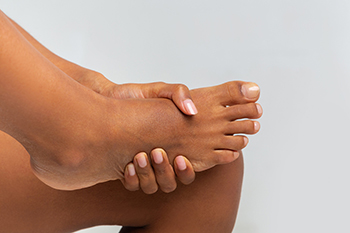
Regardless of the type of exercise you choose to do, there is often specific footwear designed to achieve the best results for that activity. The right shoes can help with proper form and preventing foot pain during exercise. Consider that if you feel pain during or after your workouts, you may be wearing the wrong shoes for the activity. Additionally, your shoes could be worn out, or the shoes may not be the right ones for your foot type. A gait analysis involves watching how you walk without shoes to understand how your feet bear weight as you walk. This is often a starting point to recommending a shoe type for your individual gait pattern. Shoes can differ by pronation type, arch support, and other foot mechanic specifics. If you experience foot pain during your workouts, it is suggested that you visit a podiatrist for an examination, a gait analysis, and a discussion about the best shoes for you.
Ankle and foot injuries are common among athletes and in many sports. They can be caused by several problems and may be potentially serious. If you are feeling pain or think you were injured in a sporting event or when exercising, consult with one of our podiatrists from James Kutchback, DPM, CWS-P. Our doctors will assess your condition and provide you with quality foot and ankle treatment.
Common Injuries
The most common injuries that occur in sporting activities include:
- Achilles Tendonitis
- Achilles Tendon Rupture
- Ankle Sprains
- Broken Foot
- Plantar Fasciitis
- Stress Fractures
- Turf Toe
Symptoms
Symptoms vary depending upon the injury and in some cases, there may be no symptoms at all. However, in most cases, some form of symptom is experienced. Pain, aching, burning, bruising, tenderness, tightness or stiffness, sensation loss, difficulty moving, and swelling are the most common symptoms.
Treatment
Just as symptoms vary depending upon the injury, so do treatment options. A common treatment method is known as the RICE method. This method involves rest, applying ice, compression and elevating the afflicted foot or ankle. If the injury appears to be more serious, surgery might be required, such as arthroscopic or reconstructive surgery. Lastly, rehabilitation or therapy might be needed to gain full functionality in the afflicted area. Any discomfort experienced by an athlete must be evaluated by a licensed, reputable medical professional.
If you have any questions please contact our offices located in The Woodlands and Woodville, TX . We offer the newest diagnostic and treatment technologies for all your foot and ankle needs.
Flip Flops and Arch Support
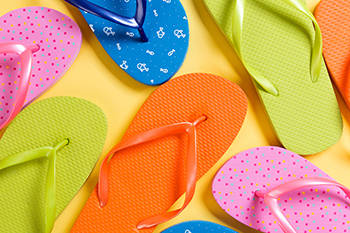
Although many men and women enjoy wearing flip flops during the summer time because the shoe is convenient and fashionable, it can wreak havoc on the health of the feet. One of the main reasons why flip flops are not always a desirable choice can be that this type of shoe lacks arch support. Due to insufficient arch support, a flip flop can make conditions such as plantar fasciitis more likely. However, not all flip flops have insufficient arch support. Namely, some flip flops have cushions in the arch of the foot to provide extra support. However, even these extra supportive flip flops still may be detrimental in the sense that the absence of a back strap causes the toes to scrunch up in order to keep the shoe on the foot. If you are someone that often wears flip flops, it is suggested that you contact a podiatrist today for more information and potential treatment.
Flip-flops are not always the best choice of footwear. If you have any concerns about your feet or ankles, contact one of our podiatrists from James Kutchback, DPM, CWS-P. Our doctors will assist you with all of your foot and ankle needs.
Flip-Flops and Feet
When the weather starts warming up, people enjoy wearing flip-flops. Flip-flops are comfortable, stylish, and easy to slip on and off; they're perfect for any summer beach goer. However, these shoes can cause harm to the feet.
How Can Flip-Flops Affect Me Long-Term?
- Ankle problems
- Hip problems
- Lower back problems
- Pain in the balls of the feet
- Problems with foot arches
- Changes in the way you walk
Are There Injuries Associated with Flip-Flops?
Yes. Since flip-flops are relatively weak and do not provide the same amount of support as sneakers, people who wear flip-flops regularly are more susceptible to injuries. On top of that, the open nature of the shoe makes your feet more prone to other problems, such as cuts and even infections. Common injuries and ailments include:
- Sprained ankles
- Blisters
- Infections
- Cuts and Scrapes
I like Wearing Flip-Flops. Are There Safe Alternatives?
When buying flip-flops, try to find ones that have sturdy soles and that are made of high-quality materials that will support for your feet. These flip-flops will cost more but will also last longer as a result.
If you have any questions, please feel free to contact our offices located in The Woodlands and Woodville, TX . We offer the newest diagnostic and treatment technologies for all your foot care needs.
Effective Care Tips for Healthy Feet
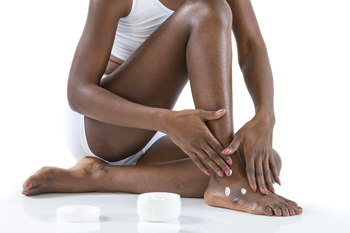
The feet are one of the areas of the body that are often neglected. Painful foot conditions may develop as a result of this, and may easily be avoided when everyday foot care methods are implemented. These can begin with maintaining a healthy weight, which can protect the feet from enduring extra pressure. After the feet are washed and dried daily, it is beneficial to apply a good moisturizer, which can help to keep the skin looking and feeling smooth. An extremely important foot care tip consists of wearing shoes that fit correctly. It is noted to be one of the best preventive measures that can help with mobility, in addition to maintaining maximum comfort. The feet are the foundation of the body, and stretching the feet is a good way to keep them strong. If you would like more information about effective foot care techniques, it is suggested that you consult with a podiatrist who can provide you with the information you are seeking.
Everyday foot care is very important to prevent infection and other foot ailments. If you need your feet checked, contact one of our podiatrists from James Kutchback, DPM, CWS-P. Our doctors can provide the care you need to keep you pain-free and on your feet.
Everyday Foot Care
Often, people take care of their bodies, face and hair more so than they do for their feet. But the feet are a very important aspect of our bodies, and one that we should pay more attention to. Without our feet, we would not be able to perform most daily tasks.
It is best to check your feet regularly to make sure there are no new bruises or cuts that you may not have noticed before. For dry feet, moisturizer can easily be a remedy and can be applied as often as necessary to the affected areas. Wearing shoes that fit well can also help you maintain good foot health, as well as making it easier to walk and do daily activities without the stress or pain of ill-fitting shoes, high heels, or even flip flops. Wearing clean socks with closed shoes is important to ensure that sweat and bacteria do not accumulate within the shoe. Clean socks help to prevent Athlete’s foot, fungi problems, bad odors, and can absorb sweat.
If you have any questions, please feel free to contact our offices located in The Woodlands and Woodville, TX . We offer the newest diagnostic and treatment technologies for all your foot care needs.
Tarsal Tunnel Syndrome
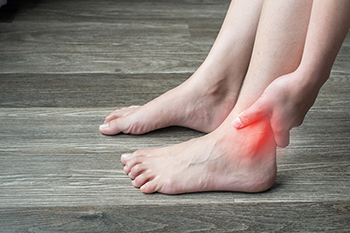
Tarsal tunnel syndrome or TTS is when the posterior tibial nerve in the ankle becomes compressed. This can happen from medical conditions including rheumatoid arthritis and diabetes, repetitive stress activities, other foot conditions, or carrying excessive weight. While there is a higher incidence of this ailment among women and adults, it can happen to anyone. When this happens, pain, tingling, and numbness can radiate to the foot and worsen with walking. Rest is helpful when pain develops. This affliction is relatively uncommon and can be misdiagnosed. Because of this, if you have pain in your ankle or heel, it is strongly suggested that you see a podiatrist who can properly evaluate what is causing it and provide treatment options.
Tarsal tunnel syndrome can be very uncomfortable to live with. If you are experiencing tarsal tunnel syndrome, contact one of our podiatrists of James Kutchback, DPM, CWS-P. Our doctors can provide the care you need to keep you pain-free and on your feet.
Tarsal Tunnel Syndrome
Tarsal tunnel syndrome, which can also be called tibial nerve dysfunction, is an uncommon condition of misfiring peripheral nerves in the foot. The tibial nerve is the peripheral nerve in the leg responsible for sensation and movement of the foot and calf muscles. In tarsal tunnel syndrome, the tibial nerve is damaged, causing problems with movement and feeling in the foot of the affected leg.
Common Cause of Tarsal Tunnel Syndrome
- Involves pressure or an injury, direct pressure on the tibial nerve for an extended period of time, sometimes caused by other body structures close by or near the knee.
- Diseases that damage nerves, including diabetes, may cause tarsal tunnel syndrome.
- At times, tarsal tunnel syndrome can appear without an obvious cause in some cases.
The Effects of Tarsal Tunnel Syndrome
- Different sensations, an afflicted person may experience pain, tingling, burning or other unusual sensations in the foot of the affected leg.
- The foot muscles, toes and ankle become weaker, and curling your toes or flexing your foot can become difficult.
- If condition worsens, infections and ulcers may develop on the foot that is experiencing the syndrome.
A physical exam of the leg can help identify the presence of tarsal tunnel syndrome. Medical tests, such as a nerve biopsy, are also used to diagnose the condition. Patients may receive physical therapy and prescriptive medication. In extreme cases, some may require surgery.
If you have any questions please contact our offices located in The Woodlands and Woodville, TX . We offer the newest diagnostic and treatment technologies for all your foot and ankle needs.
What Type of Orthotic Do I Need?
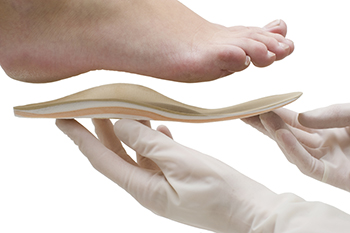
There are specific foot conditions that may benefit from wearing orthotics. These can include flat feet, high arches, and plantar fasciitis. Orthotics are defined as prescribed heel or shoe inserts that are made to treat foot conditions. They generally provide more support in shoes and are available in various shapes and sizes. Custom-made orthotics are known to fall into three categories. Hard materials such as plastic are used to make functional orthotics, and can be durable and long-lasting. They can help to offer support to the foot and improve ankle mobility. Accommodative custom orthotics are made of softer materials, and are generally well-cushioned. They are effective in reducing the stress of standing and walking, and may be chosen for diabetic patients. Orthotics made of both of these types of materials are referred to as semi-rigid. They can be used to treat patients who have arthritic or flat feet. If you have a foot condition that requires orthotics to be worn for maximum improvement, it is suggested that you consult with a podiatrist who can determine what the best type is for you and can create a custom orthotic to meet your foot's specific needs.
If you are having discomfort in your feet and would like to try orthotics, contact one of our podiatrists from James Kutchback, DPM, CWS-P. Our doctors can provide the care you need to keep you pain-free and on your feet.
What Are Orthotics?
Orthotics are inserts you can place into your shoes to help with a variety of foot problems such as flat feet or foot pain. Orthotics provide relief and comfort for minor foot and heel pain but can’t correct serious biomechanical problems in your feet.
Over-the-Counter Inserts
Orthotics come in a wide variety of over-the-counter inserts that are used to treat foot pain, heel pain, and minor problems. For example, arch supports can be inserted into your shoes to help correct overarched or flat feet, while gel insoles are often used because they provide comfort and relief from foot and heel pain by alleviating pressure.
Prescription Orthotics
If over-the-counter inserts don’t work for you or if you have a more severe foot concern, it is possible to have your podiatrist prescribe custom orthotics. These high-quality inserts are designed to treat problems such as abnormal motion, plantar fasciitis, and severe forms of heel pain. They can even be used to help patients suffering from diabetes by treating foot ulcers and painful calluses and are usually molded to your feet individually, which allows them to provide full support and comfort.
If you are experiencing minor to severe foot or heel pain, it’s recommended to speak with your podiatrist about the possibilities of using orthotics. A podiatrist can determine which type of orthotic is right for you and allow you to take the first steps towards being pain-free.
If you have any questions, please feel free to contact our offices located in The Woodlands and Woodville, TX . We offer the newest diagnostic and treatment technologies for all your foot care needs.
Benefits of Stretching the Arch of the Foot
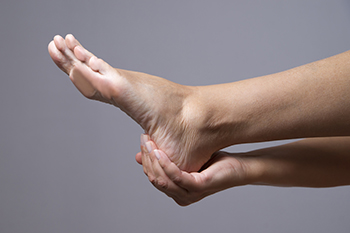
The arches of the feet play an important role in everyone’s daily life, as they help you walk by keeping the foot flexible. The arches of the feet also support your weight when you stand, walk, run, or jump. Stretching exercises specifically targeting the arches can keep them strong and healthy. They can increase blood flow, improve flexibility, relieve pain, improve balance, and reduce the chances of injury. Among the stretches thought to be useful for the arches are the seated foot stretch and the stair stretch. First, sit in a chair with the affected foot crossed over the opposite leg. Pull the toes toward the ankle and hold for 10 seconds. Repeat two or three times and switch legs. Second, stand on a step with the heel hanging over the edge. Be sure to hold onto a rail or banister. Lower the heel gently until you feel a slight stretch in the arch and calf. Hold for 15 seconds and release. Repeat two to four times and switch legs. If you experience arch pain more often and for longer periods, it is suggested that you make an appointment with a podiatrist for an exam and further information on stretches that can help.
Stretching the feet is a great way to prevent injuries. If you have any concerns with your feet consult with one of our podiatrists from James Kutchback, DPM, CWS-P. Our doctors will assess your condition and provide you with quality foot and ankle treatment.
Stretching the Feet
Stretching the muscles in the foot is an important part in any physical activity. Feet that are tight can lead to less flexibility and make you more prone to injury. One of the most common forms of foot pain, plantar fasciitis, can be stretched out to help ease the pain. Stretching can not only ease pain from plantar fasciitis but also prevent it as well. However, it is important to see a podiatrist first if stretching is right for you. Podiatrists can also recommend other ways to stretch your feet. Once you know whether stretching is right for you, here are some excellent stretches you can do.
- Using a foam roller or any cylindrical object (a water bottle or soda can will do), roll the object under your foot back and forth. You should also exert pressure on the object. Be sure to do this to both feet for a minute. Do this exercise three times each.
- Similar to the previous one, take a ball, such as a tennis ball, and roll it under your foot while seated and exert pressure on it.
- Grab a resistance band or towel and take a seat. If you are using a towel, fold it length wise. Next put either one between the ball of your foot and heel and pull with both hands on each side towards you. Hold this for 15 seconds and then switch feet. Do this three times for each foot.
- Finally hold your big toe while crossing one leg over the other. Pull the toe towards you and hold for 15 seconds. Once again do this three times per foot.
It is best to go easy when first stretching your foot and work your way up. If your foot starts hurting, stop exercising and ice and rest the foot. It is advised to then see a podiatrist for help.
If you have any questions please contact our offices located in The Woodlands and Woodville, TX . We offer the newest diagnostic and treatment technologies for all your foot and ankle needs.





